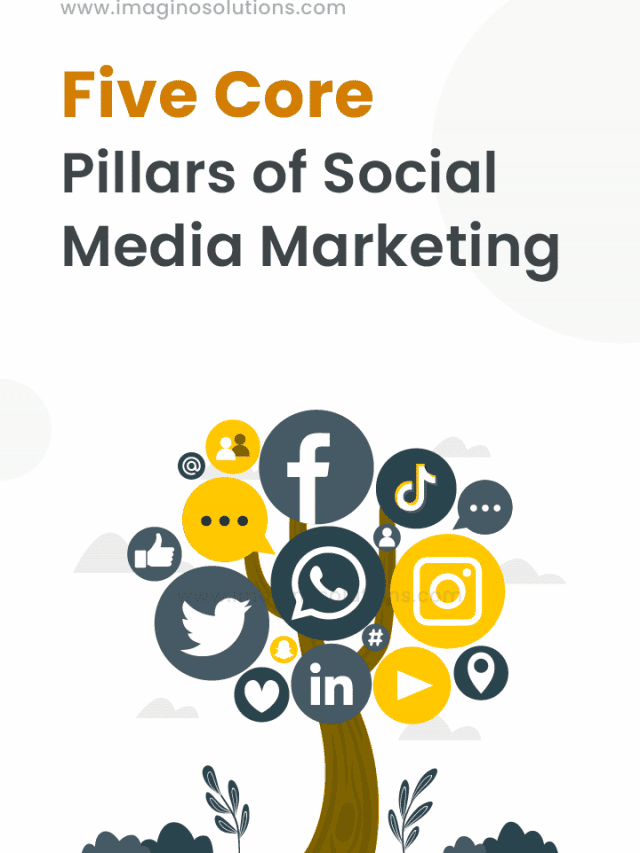5 Core Pillars of Social Media Marketing
In the previous article (DIGITAL MARKETING: STRATEGIES TO BOOST YOUR ONLINE PRESENCE), we explored different types of strategies in digital marketing. A digital marketing strategy is a business necessity if your end-goal is to build a business online. Moreover, we have discussed how different types of digital marketing strategies can help in increasing brand awareness, boosting traffic, and most importantly, reaching your target audience.
This time, we will be diving deeper into one of the most common strategies in digital marketing, which is social media marketing. As a refresher, social media marketing is another digital marketing strategy that is used to create content across social media platforms to promote your brand, products, or services. These platforms are usually the ones we use in our day-to-day lives, such as Facebook, Instagram, Twitter, LinkedIn, etc.
But, before you publish content on social media platforms, you need to know the five core pillars of social media marketing. Now, what this essentially means is that before you curate content to be posted on social media, you will need to consider five key factors that will help your content or post get better engagement.
These are,
Table of Contents
1) Social Media Marketing Strategy
It is extremely important to create an effective social media strategy before you publish anything on social media. In order to do that, you will also need to ask yourself a series of questions such as
What are the goals of your social media marketing campaign/post?
Before you post content, you need to know what your goals are, whether they are to boost brand awareness, drive traffic to your website, or even boost sales. Knowing what your goals are will help you to create content that serves a purpose.
Which social media platform will you be using to achieve your goal?
You will need to choose social media platforms that you believe your audience will be on. This is typically done by researching your platform demographics, which are basically your target audience.
What type of content will you be posting?
Now it’s time to consider the nature of your content, whether it’s images, videos, or even articles that you are willing to share online. You will also need to know who your target audience is so that you can publish content that is specifically tailored to them.
For example, Instagram users are normally teenagers and millennials, and they usually engage with image-based content such as Instagram posts, stories (where you can upload images live from where you are), and video-based content ( known as reels on Instagram).
2) Social Media Marketing Planning & Publishing
The second core pillar is planning and publishing. This is typically done after you have curated your content and when you are ready to share it on social media. Planning is also necessary to identify the best time to engage with your intended audience. Needless to say, it is extremely important to have a consistent presence on social media. It is also recommended to schedule your posts in advance so that your target audience will know that you are reliable and professional.
For instance, creating a content calendar or a social media calendar can help you schedule your upcoming posts in advance and you can also choose the required date and time to post them.
You should also consider the timing and frequency of your posts to know when your target audience will be active and to also make sure you don’t post too much content to overwhelm your audience.
3) Listening & Engagement
This is the part when your customer or target audience engages with your brand. When you post content that attracts your audience, they are more likely to comment on your social media posts, start conversations related to your brand, or even message you directly.
So, it is crucial to monitor and analyse these conversations in order to understand what type of content resonates well with your target audience. This is also called social listening. Whether you receive positive or negative feedback, it is extremely important to acknowledge it so that your audience will feel seen and heard.
4) Social Media Analytics & Reporting
After you have published content on social media, you will want to know how your content is performing. Essentially, you must be aware of whether your content is engaging your audience, the number of users interacting with your posts, and whether your post has a higher reach than the previous time. This is where analytics and reporting come in. Through social media analytics tools, you can examine how your posts are performing regularly, weekly or monthly. You can also draft a report based on the performance of your content to present it to your stakeholders.
5) Social Media Advertising
Through advertising, specifically paid advertising, you can increase your brand’s visibility and reach a wider audience. Basically, we can target people based on their demographics, location, interests, behaviour, etc. Depending upon your budget, you can run paid campaigns and display ads to continuously expand your presence on social media and develop relationships with your customers along the way.
Examples of paid advertising include: story ads, video ads, and image ads.
Conclusion
To conclude, these are the five core pillars of social media marketing. Whether you are working for a small-scale or large-scale business, social media is one of the most powerful marketing tools to establish your brand’s visibility. Keep in mind that whenever you create content, you also have to create an effective strategy by understanding who your target audience is and by thoughtfully planning ahead for better engagement and wider reach.
hire your dedicated social media manager now.
See also:
DIGITAL MARKETING: 6 STRATEGIES TO BOOST YOUR ONLINE PRESENCE
